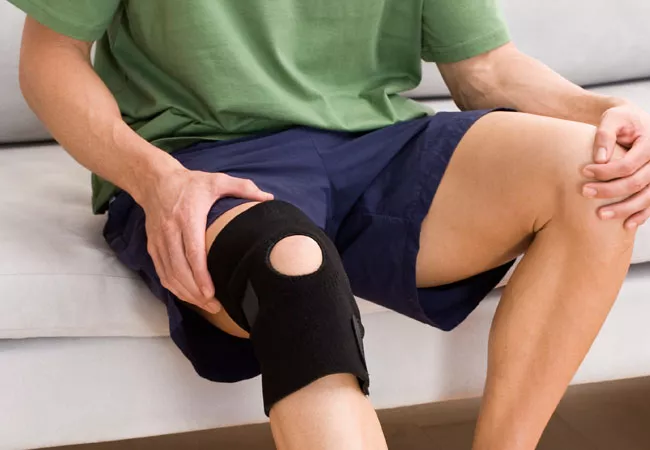Strong leg muscles could help combat arthritis in the knee, study shows

CNN — Most likely, you are aware of someone who has undergone total knee replacement. The technique is somewhat widespread; in the US, 790,000 of these are performed each year.
The majority of knee replacement surgeries are performed to treat osteoarthritis, a condition that can result in pain, swelling, and limited knee motion. In fact, a study published in August 2023 in the journal Experimental and Therapeutic Medicine suggests that knee osteoarthritis has a significant prevalence of morbidity and impairment.
The most vulnerable groups to this excruciating illness are women, older folks, overweight individuals, and those who have played sports like tennis, soccer, and long-distance running. Genes and past knee injuries may also be factors.
However, a study published in April in the journal JAMA Network Open suggests that by strengthening your leg muscles, you may be able to prevent or at least slow the development of knee osteoarthritis.
‘Muscle mass matters’
Researchers did not discover any connection between an individual’s overall physical activity level and an elevated risk for knee osteoarthritis after conducting a meta-analysis on data gathered from 5,003 patients in the Netherlands. The patients were then split into two groups by the researchers: those who got their exercise from non-weight-bearing sports like cycling and swimming, and those who got it from weight-bearing sports like running and walking.
Here, the team found that individuals with low levels of lower-limb muscle mass who participated in weight-bearing recreational physical activity had an increased risk of getting osteoarthritis in their knees.
“We investigated whether the amount of muscle surrounding the joint affected the development of osteoarthritis in the knee after observing that only weight-bearing sports gave people an increased risk of the condition,” said Dr. Joyce van Meurs, coauthor of the study and professor of population genomics in musculoskeletal diseases at Erasmus Medical Centre in Rotterdam, Netherlands.
The researchers anticipated that individuals with stronger muscles would do better than those with weaker ones because increased muscle mass can shield and cushion the knee from mechanical pressures inside the knee joint.
Van Meurs stated, “And that’s exactly what we saw.” “The increased risk of osteoarthritis from weight-bearing activities was not present in persons with higher muscle mass.”
Dr. Kathryn Miller, an associate professor of internal medicine at the University of Wisconsin School of Medicine and Public Health in Madison, described this finding as an interesting discovery.
Non-participant Miller stated, “We’ve always had this idea that muscle mass matters and helps protect joints.” “This particular study contributes to the growing body of evidence suggesting that muscle mass is critical for both functional maintenance and potential prevention of osteoarthritis.”
What this study means for exercise and sports
Even if the study’s conclusions are significant, van Meurs stated that further research is still needed. For instance, weight is recognised by scientists to be the primary risk factor for osteoarthritis of the knee. The subjects with an average body mass index of 26 provided the data that van Meurs and her colleagues examined. (BMI is a measurement of body fat that is dependent on weight and height.)
A BMI of 26 is below the average BMI for Americans, yet it is still somewhat above a healthy range. Is it possible to apply the study’s conclusions to people who are obese or overweight?
“We’re not entirely certain,” van Meurs admitted. One of the main risk factors for knee osteoarthritis is having a high BMI. Perhaps the rest of the association is different if it is so dominant.
Miller concurred. “You’re putting more stress on your joints the higher your BMI is, especially when you’re doing weight-bearing activities,” Miller stated. “Perhaps those with higher BMIs will require even more muscle mass in the lower limbs than do those with lower BMIs.”
An ongoing, extensive study at Erasmus Medical Centre aims to ascertain if doctors can tailor patient advise according to a patient’s weight, muscle mass, and joint movement.
According to van Meurs, “we’re studying how much people can load their joint, based on these factors.” He added that a lot of patients who have knee pain question their doctors if they may still engage in their favourite hobbies. As of right now, there’s no conclusive response.
How to get moving safely
Notwithstanding these doubts, the study provides several insightful conclusions.
“Train in the gym to strengthen your leg muscles before engaging in a lot of weight-bearing activity,” said van Meurs. Additionally, begin cautiously if you plan to undertake a weight-bearing exercise like running.
She stated, “You’ll get injured right away if your tendons and muscles aren’t adjusted to these new stresses.”
Miller stated that she advises her patients to maintain a healthy weight and to continue working out. “Don’t stop your activities if you find out you have osteoarthritis,” she said. “Those who are sedentary are more likely to develop symptomatic osteoarthritis and have lower joint health and muscle mass.”
Miller advised doing wall sits, going on a stroll, or sitting in a chair and standing up ten times without using your arms to support yourself. Simply keep going.
According to Miller, “if you have mild discomfort during an activity and it goes away quickly, that’s fine for patients with osteoarthritis.” However, if you experience more discomfort after an activity and it doesn’t go away the next day, it can be too much for your joint at this time.




